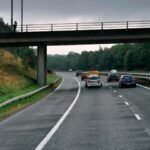You are witnessing a significant shift in the way transactions are conducted with the rise of stablecoins. These digital currencies offer stability, transparency, and efficiency, making them a viable alternative to traditional currencies. In this blog post, we will explore the growing popularity, types, benefits, and challenges of stablecoins, shedding light on their impact on the global financial landscape.
Key Takeaways:
- Stablecoins offer stability: By pegging their value to stable assets like the US dollar or gold, stablecoins minimize price volatility, making them attractive for users seeking a reliable digital currency.
- Regulatory uncertainty persists: Regulatory bodies are still working on how to classify and regulate stablecoins, causing market uncertainty and potential risks for users.
- Stablecoins face competition: Traditional financial institutions and central bank digital currencies pose a challenge to stablecoins, impacting their long-term viability in the market.
- Use cases are diverse: Stablecoins are being used for transactions, remittances, and as a store of value, showcasing their versatility and potential in various financial services.
- Future holds promise: While the future of stablecoins appears promising with increasing adoption, questions around their environmental impact, geopolitical implications, social equity, interoperability, and long-term stability remain to be addressed.
The Rise of Stablecoins
Your journey into the world of stablecoins begins with understanding the different types available. There are three main categories: fiat-collateralized, crypto-collateralized, and algorithmic stablecoins. Fiat-collateralized stablecoins are backed by traditional assets like the US dollar, providing stability linked to real-world value. On the other hand, crypto-collateralized stablecoins use cryptocurrencies as collateral, while algorithmic stablecoins rely on smart contracts to maintain their peg. Understanding these distinctions can help you navigate the diverse landscape of stablecoins effectively.
Types of Stablecoins
The table below highlights the key differences between the various types of stablecoins:
| Fiat-Collateralized | Backed by traditional assets like the US dollar |
| Crypto-Collateralized | Backed by cryptocurrencies |
| Algorithmic Stablecoins | Rely on smart contracts for stability |
While stablecoins offer clear benefits such as faster cross-border transactions and increased financial accessibility, it’s crucial to understand the risks involved. Regulatory challenges and market uncertainties can impact the stability of stablecoins. Therefore, staying informed about the industry trends and developments is necessary. Despite these challenges, stablecoins continue to gain momentum in the digital economy, providing a promising alternative to traditional currencies.
Benefits of Stablecoins
One significant benefit of stablecoins is their ability to facilitate faster cross-border transactions, reducing fees and improving financial inclusivity. Stablecoins can serve as a reliable store of value in volatile markets, offering stability and security to users. By leveraging these benefits, you can experience seamless transactions and enhanced access to financial services, making stablecoins a valuable addition to your digital wallet. Stablecoins are revolutionizing the way we perceive and utilize digital currencies, offering a stable and efficient alternative to traditional forms of money. Embracing the benefits of stablecoins can lead to a smoother and more convenient financial experience, empowering you to navigate the digital economy with confidence.

Challenges and Risks
Regulatory Uncertainties
One of the major challenges facing stablecoins is the uncertainty surrounding their regulatory status. As regulatory bodies grapple with how to categorize and oversee these digital currencies, market participants are left in a state of flux. This uncertainty can lead to hesitancy from users, investors, and adopters, which could ultimately hinder the growth and stability of the stablecoin market.
Competition and Risk Factors
One of the primary risk factors associated with stablecoins is the competition they face from traditional financial institutions and central bank digital currencies (CBDCs). These entities could potentially challenge the long-term viability of stablecoins, impacting their widespread adoption and use. Concerns around stablecoin issuers’ reserves, security vulnerabilities, and the potential for market manipulation pose risks that users need to be aware of.
The other key factors to consider when evaluating the risks associated with stablecoins is their resilience during economic crises or major market fluctuations. As stablecoins aim to provide stability in the short term, it is important to assess their long-term viability and performance under various economic conditions to make informed decisions about their use.
Though stablecoins offer benefits such as faster cross-border transactions and lower fees, it is important to consider the risks associated with their use. Ensuring the security of your transactions and understanding the regulatory landscape is crucial in navigating the stablecoin market.
The Role of Stablecoins in the Digital Economy
After understanding the key points surrounding stablecoins, it’s clear that they play a crucial role in the digital economy. Their stability, transparency, and efficiency in transactions make them a valuable asset in today’s financial landscape. Let’s probe into how stablecoins are utilized and integrated into the digital economy.
Use Cases and Integration with DeFi
Stablecoins are being widely used for various purposes such as remittances, peer-to-peer transactions, and as a store of value in volatile markets. Their ability to offer faster cross-border transactions and lower fees make them an attractive option for individuals in underserved regions. Furthermore, stablecoins are integral to decentralized finance (DeFi) platforms, providing liquidity and enabling financial services without the need for traditional intermediaries.
Future Outlook and Considerations
Digitalization is rapidly transforming the financial landscape, and stablecoins are poised to play a significant role in the future of the digital economy. As more individuals and institutions adopt stablecoins for their stability and utility, their popularity is expected to continue to rise. However, there are some considerations to keep in mind when it comes to the future outlook of stablecoins.
Considerations must be made regarding the long-term stability of stablecoins during economic crises or major market fluctuations. It’s important to monitor regulatory developments and potential risks associated with stablecoin issuers’ reserves, security vulnerabilities, and market manipulation to ensure the overall stability of the market. Keeping an eye on how stablecoins evolve in the digital economy will be crucial for their continued success and adoption.
Conclusion
Following this overview of stablecoins, it is clear that they have emerged as a viable alternative to traditional currencies, offering stability, transparency, and efficiency in transactions. As you consider the benefits and risks associated with stablecoins, it is necessary to stay informed about regulatory developments and market trends that may impact their long-term viability. While stablecoins continue to gain popularity for various use cases, including decentralized finance and cross-border transactions, it is crucial to remain vigilant about potential risks such as security vulnerabilities and market manipulation. As you navigate the evolving landscape of digital currencies, understanding the role of stablecoins and their impact on the global economy will be key to making informed decisions in the digital economy.
FAQ
Q: What are stablecoins?
A: Stablecoins are digital currencies designed to minimize price volatility by pegging their value to stable assets like the US dollar or gold.
Q: Why are stablecoins gaining popularity?
A: Stablecoins are becoming popular due to their stability, transparency, and efficiency in transactions.
Q: What are the different types of stablecoins?
A: There are different types of stablecoins including fiat-collateralized, crypto-collateralized, and algorithmic stablecoins.
Q: What benefits do stablecoins offer?
A: Stablecoins offer benefits such as faster cross-border transactions, lower fees, and increased accessibility to financial services for individuals in underserved regions.
Q: What are the risks associated with stablecoins?
A: Risks associated with stablecoins include concerns about issuer reserves, security vulnerabilities, and potential market manipulation.


















